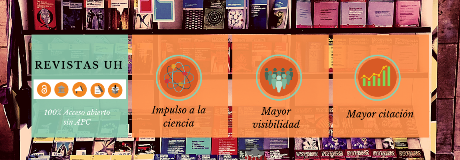The role of service design in assistive technology research and development.
##plugins.themes.bootstrap3.article.main##
Abstract
The objective of this study is to present and discuss the importance of service design in the research and development of Assistive Technology for older people. Through the bibliographic review, it is observed that the service design places people at the center of all projects and works on the definition of services from the point of view of the person, their expectations, their needs and their limitations with the aim of being able to offer positive experiences while using technology in their daily lives. This article concludes that the design of services is the key element for the research and development of Assistive Technology and contributes significantly to the care of the elderly at home.
##plugins.themes.bootstrap3.article.details##

This work is licensed under a Creative Commons Attribution-NonCommercial-ShareAlike 4.0 International License.
- Attribution — You must give appropriate credit , provide a link to the license, and indicate if changes were made . You may do so in any reasonable manner, but not in any way that suggests the licensor endorses you or your use.
- NonCommercial — You may not use the material for commercial purposes .
- No additional restrictions — You may not apply legal terms or technological measures that legally restrict others from doing anything the license permits.
- ShareAlike — If you remix, transform, or build upon the material, you must distribute your contribution under the same license as the original. NOTE: This point applies to numbers 1 to 20 of the magazine with the previous CC-BY-NC-SA 4.0 license. Does not apply to the new CC BY-NC 4.0 license from Volume 11, Number. 21 (2024).
References
Royo, M. T. B. B. (2014). Envejecimiento y Sociedad: Una Perspectiva Internacional. Ed. Médica Panamericana. ISBN 9788498354775. 196p.
Buehler, E., Branham, S., Ali, A., Chang, J. J., Hofmann, M. K., Hurst, A. & Kane, S. K. (2015, April). Sharing is caring: Assistive technology designs on thingiverse. In: Proceedings 33rd Annual ACM Conference on Human Factors in Computing Systems, 525-534. https://doi.org/10.1145/2702123.2702525.
Bharucha, A. J., Anand, V., Forlizzi, J., Dew, M. A., Reynolds III, C. F., Stevens, S. & Wactlar, H. (2009). Intelligent assistive technology applications to dementia care: current capabilities, limitations, and future challenges. The American Journal of Geriatric Psychiatry, 17(2), 88-104. https://doi.org/10.1097/JGP.0b013e318187dde5
Blomkvist, J., Holmlid, S. & Segelström, F. (2010). Service design research: yesterday, today and tomorrow. In: M. Stickdorn & J. Schneider (Eds.) This is Service Design Thinking (306-313). BIS Publisher.
Organización Mundial de la Salud. (2015). Informe mundial sobre el envejecimiento y la salud. ISBN 978.92.4.356504.0
Mann, W. C., Tomita, M., Packard, S., Hurren, D. & Creswell, C. (1994). The need for information on assistive devices by older persons. Assistive Technology, 6(2), 134-139. https://doi.org/10.1080/10400435.1994.10132237.
Cowan, D. & Turner-smith, A. (1999). The role of assistive technology in alternative models of care for older people, in 26 (2), 325-327. In Research, HMSO. http://doi.org/10.1.1.123.1879
Edwards, N. I. & Jones, D. A. (1998). Ownership and use of assistive devices amongst older people in the community. Age and Ageing, 27(4), 463-468. https://doi.org/10.1093/ageing/27.4.463.
Ward, G., Holliday, N., Awang, D. & Harson, D. (2015). Creative approaches to service design: using co-creation to develop a consumer focused assistive technology service. Technology and Disability, 27(1, 2), 5-15. https://doi.org/10.3233/TAD-150424
Ward, G. & Awang, D. (2014, August). Creative approaches to service design: development of a new assistive technology service. British Journal of Occupational Therapy. 77 (8_suppl): 1-17. https://doi.org/10.1177/03080226140770S801
Kellaher, L. (2001). Shaping everyday life: beyond design. In: S. Peace & C. Holland (Eds.) Inclusive Housing in an Ageing Society. 214-234. https://doi.org/ 10.1332/policypress/9781861342638.003.0010
Bryant, D. P. & Bryant, B. R. (2011). Assistive technology for people with disabilities. Pearson Higher Ed. 5 (1,2,3). https://doi.org/ 257133280
Curedale, R. (2013). Service Design: 250 essential methods. Design Community College. ISBN 13: 9780989246866






















